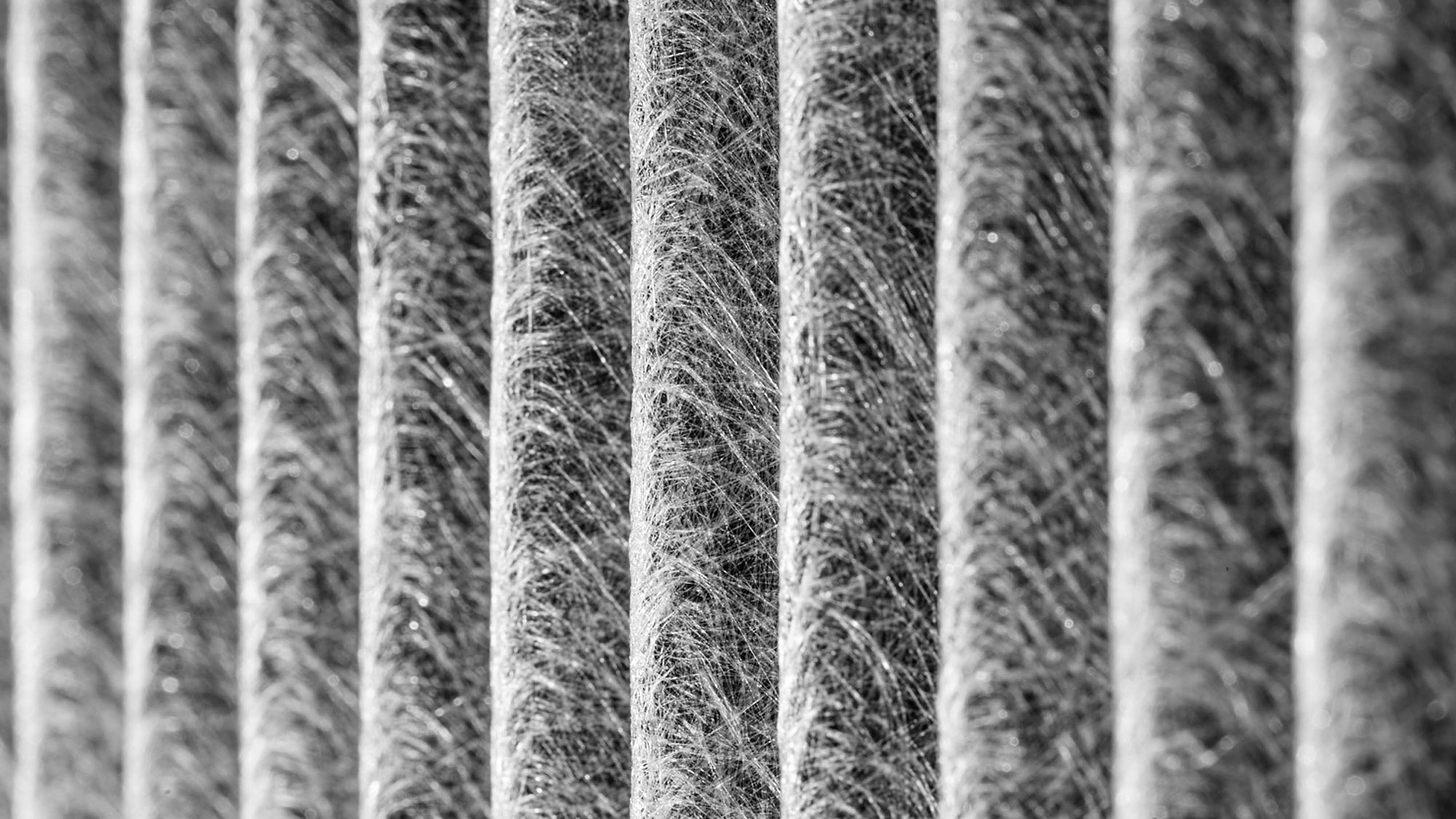
Fighting cooking odours in the kitchen: Activated charcoal for a fresh cooking experience
Air quality while cooking is one of the most important factors for creating a sense of well-being in the kitchen as a living space. Here we explain why good air quality in the kitchen is important and how active charcoal helps reduce smells and humidity.
Open-plan kitchens with spacious room layouts and cooking islands are on trend. Air recirculation systems, which filter air while you’re cooking and then feed it back into the room, are increasingly gaining popularity over exhaust systems. Exhaust systems direct the air outside via ducts. However, this can lead to heat loss, which in turn affects energy efficiency, especially in winter. Innovative filter technologies play a key role in combating this issue.
Cooking can have a significant impact on air quality. Scientific studies at cooking events have shown that up to 75 odorous substances can be released in various concentrations and perceived intensities. Although fewer odorous substances are likely to be released in a normal, domestic kitchen (depending on the dish), there is no denying that cooking has a significant impact on air quality.
To counteract this effect, many kitchens have an integrated exhaust air system that reliably directs odours and steam outside. However, this also means warm indoor air is directed outside, and a fresh supply is required to replace it. An alternative option is a recirculation system, which is more energy-efficient and easier to integrate. All it requires is a highly effective grease filter and an activated charcoal filter.
Air circulation systems are in
Modern trends in home design not only focus on open-plan kitchens, aesthetic cooking islands and spacious room layouts – they also increasingly place energy saving at the heart of home planning. In this context, air recirculation systems in extractor hoods are becoming increasingly important. In comparison to exhaust systems, they prevent heat loss through warm air being directed outside, especially in winter.
Effective filtration is another important factor that contributes to quality of life in domestic kitchens. If cooking odours are not contained by doors, they can quickly become embedded in furniture, carpets, curtains and clothing.
This is whyhigh-performance cooktop extractor systems are fitted with a recirculation mode consisting of two filter stages to ensure the best possible air quality: grease particles are effectively filtered out of the cooking fumes in the grease filter, while the activated charcoal filter removes odours of all kinds from the air in the second stage. BORA high-performance activated charcoal filters are equipped with different materials so that even the most stubborn odours, such as those from fish and roasts, are effectively retained.
TIP: to ensure optimal performance, only use original BORA activated charcoal filters. The filter should be changed regularly. The BORA cooktop displays an “F” when the filter needs to be changed.
Activated charcoal for fresh air
An activated charcoal filter is usually made up of several layers. Not only does the filter separate particles, it also separates odours. The main component of an activated carbon filter is therefore the activated carbon. The majority of pores in an activated carbon filter are very small in diameter, which is why they are known as “micropores”.
These micropores give the activated carbon its high inner surface area. A micropore is at least 35,000 times thinner than a human hair. Active charcoal can be treated with various other substances to further increase its effectiveness in filtering odour molecules. It can be treated with acids, for example, to improve its capacity to separate fish odours.
Activated charcoal that has been modified in this way is sometimes used in BORA activated carbon filters. Acid-impregnated activated carbon is even used for air purification in the International Space Station (ISS), albeit in larger quantities, namely 22kg.
A BORA activated carbon filter combines physical sorption (in which the odour molecule is physically bound to the surface of the activated carbon) with chemical sorption (which converts and thus eliminates the odour molecule). Both mechanisms are essential in order to effectively remove the bouquet of cooking odours.
Shelf life
At some point, even the best activated charcoal becomes worn out and can no longer fully absorb odours. The lifespan of a BORA active charcoal filter can be from 150 h (PUAKF, BAKFS), 300 h (ULBF), 400 h (ULB3) and 600 h (ULB3X). Of course, the saturation of the activated charcoal filter also depends on your cooking habits. Packed in a protective film, an activated charcoal filter can easily be stored for two years.